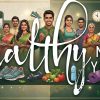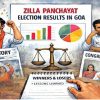Goa is abuzz with excitement as vintage bike and car owners, users, collectors and fans are decking […]

HOW TO PRIORITIZE MENTAL HEALTH AT THE WORKPLACE!
MIND & BODY, HEART & SOUL, Oct 12- Oct 18 2024 October 11, 2024World Mental Health Day
On October 10 we observe World Mental Health Day and this year’s theme is “Mental Health at the Workplace.” It couldn’t be more timely. We asked Dr Amit Dias to uncover why prioritizing mental wellbeing in our workplaces is essential, and how we can better recognize and navigate the stress that often accompanies professional life. He says, “Ensuring workplace wellbeing is a win win situation for all.” In this conversation he offers practical insights into fostering healthier, happier work environments. Read on, share widely—it might just inspire the change someone desperately needs.
Q&A interview with Dr Amit Dias
Goan Observer: Could you start by explaining the need to observe this day?
Dr Amit Dias: World Mental Health Day is observed on October 10 every year. The aim is to draw global attention to mental health issues, encourage open conversations, and break the stigma surrounding mental illness. This year’s theme, “Mental Health at the Workplace,” is particularly relevant given the stressors and sometimes bullying and harassment that people face in professional settings, which can significantly impact their mental well-being and the work outcome.
The World Health Organization (WHO) estimates that one in eight people globally live with a mental health disorder. With 60% of the global population at work, there is an urgent need to ensure that people are protected against mental illness at the work place. Ensuring workplace mental well-being is a win win situation for all.
Q: What according to you is the proportion of people with mental illness at the workplace?
A: What we know is that, mental health disorders in the workplace are becoming more visible, with an estimated 12 billion workdays lost every year due to depression and anxiety, according to WHO. There are an estimated 970 million people with mental illness and the numbers keep rising. The global economy loses about $1 trillion annually due to lost productivity stemming from depression and anxiety alone. The workplace environment can either enhance or harm a person’s mental health.
Q: The number and impact is huge indeed. Can you elaborate on the factors at work that affect mental health at the workplace?
A: Many factors can affect mental health in the workplace. High job demands, low control over decisions, poor communication, toxic leadership, and a lack of support from peers can lead to stress and anxiety. Research shows that people in jobs with unmanageable workloads are more likely to experience burnout, which can lead to depression. Also, bullying and harassment are major contributors to mental health problems, with victims often experiencing anxiety, sleep disturbances, and emotional exhaustion.
Q: How can one prioritize mental health at the workplace?
A: Managing mental health at work involves a combination of self-care and organizational changes. At an individual level, maintaining a work-life balance, setting realistic goals, taking breaks, keeping a hobby, practicing mindfulness, and seeking support when needed are effective strategies. However, from an organizational perspective, one should implement the following:
Provide mental health resources such as counseling and Employee Assistance Programs.
Foster open communication and encourage discussions about mental health.
Create a positive work culture by addressing toxic behaviors and promoting inclusion.
Offer flexible work options to support work-life balance.
Train managers to recognize and support employees with mental health concerns.
Promote peer support networks within the organization.
Encourage employees to take breaks and maintain work-life balance.
Incorporate mental health policies and protections for employees.
Q: Are there specific occupations more prone to mental health problems?
A: Yes, some occupations are at higher risk. Healthcare workers, teachers, social workers, police officers, and military personnel are more vulnerable due to high-stress environments and emotional demands. First responders, for instance, often face trauma and life-threatening situations, which can lead to anxiety, depression, and post-traumatic stress disorder (PTSD).
Similarly, teachers also experience significant stress. Everyone should be aware of the early signs of burnout and stress at the workplace and take action. On mental health day this year, we had a lecture, quiz and skit on “Mental Health for School Children” at the St Cruz High School and stressed on stress management and the need for building resilience and fighting addictions. There is a lot that can be done for mental health awareness through schools.
Q. Yes, I had a teacher friend who was stressed. What could be the reason for this and how can one help?
A: I am not surprised, I cannot comment on the individual, but in general, teachers can experience a great deal of stress. They often face high workloads, long hours, insensitive management, large class sizes, paper corrections, and the emotional burden of managing students’ needs and also balance their families. This can lead to burnout, anxiety, and depression. Schools can help by offering mental health training, counseling services, and reducing administrative burdens. Encouraging peer support and providing adequate time for rest and self-care are crucial for the mental well-being of teachers.

Q: How can one recognize the signs of mental illness at the workplace?
A: Recognizing early signs of mental illness in the workplace is the key to timely intervention. To make it easy, think of the word STRESS, and you can remember the signs.
S – Sleep disturbances (difficulty sleeping, feeling fatigued)
T – Tension and irritability (easily frustrated or angered)
R – Restlessness (inability to focus or sit still)
E – Emotional withdrawal (isolation, avoiding social interactions)
S – Sudden changesin behaviour (loss of motivation, mood swings)
S – Substance use (increased use of alcohol, drugs, or smoking)
If someone exhibits these signs, it’s important to approach them with compassion and suggest seeking professional help.
Q: What toxic workplace behavior needs to stop?
A: Toxic behavior like micromanagement, bullying, gossiping, exclusion and overworking must be eliminated. Good leaders will work on it, while the bad ones will use it as weapons to suit their own agenda in order to divide and rule. This creates a hostile environment that can lead to anxiety, depression and even physical illness. Organizations need to promote respect, inclusion and teamwork, ensuring that everyone feels valued and supported.
Q: How does stigma affect mental illness, and how can we overcome it?
A: Stigma prevents many people from seeking help due to the fear of being judged or ostracized. This is especially true in the workplace, where people worry that disclosing their mental health condition might harm their career. Overcoming stigma requires raising awareness and normalizing conversations about mental health. Employers can play a key role by creating an environment where mental health is treated as a priority, not a taboo.
Q: What is your message to readers regarding mental health in the workplace?
A: My message is simple: Mental health is just as important as physical health. If you’re struggling, don’t hesitate to seek help. Remember, it’s okay to be not okay. Employers and organizations must also recognize their responsibility in supporting mental wellbeing. Together, we can create workplaces that are healthier, happier and more productive.















